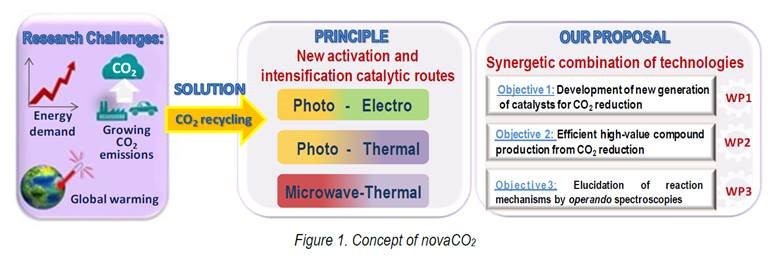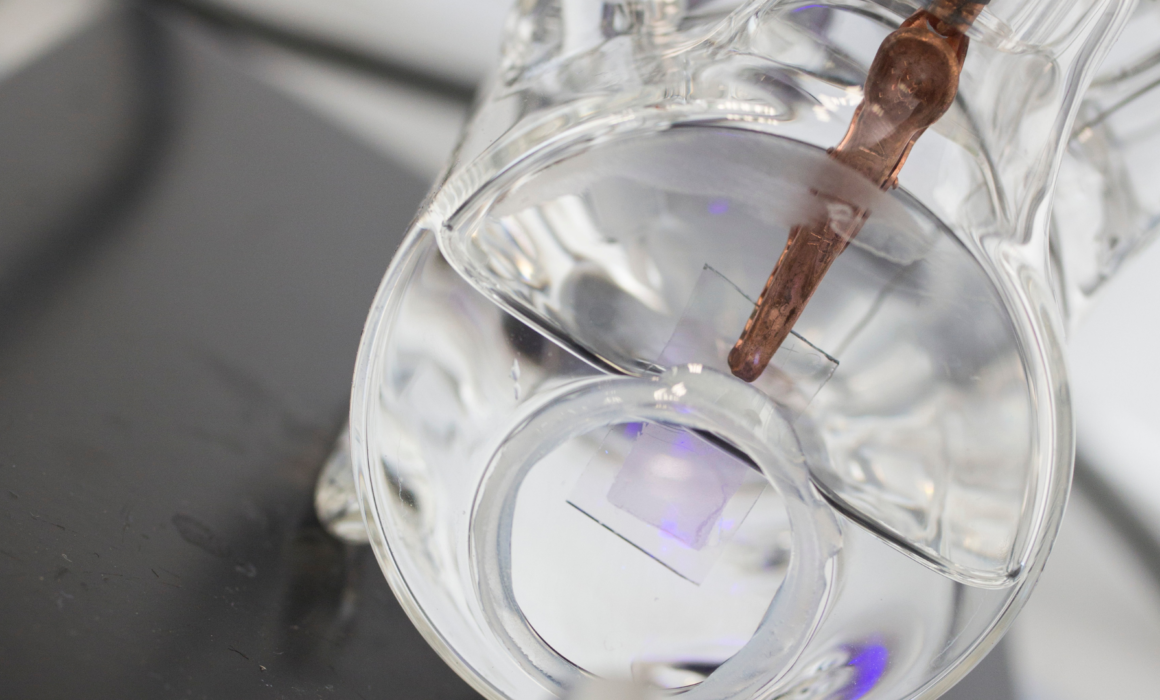novaCO2: artificial photosynthesis optimized for sustainable fuel production
The efficient implementation of new routes to produce sustainable fuels and value-added products through renewable energy sources is one of the major challenges for our society. Among the non-conventional CO2 valorization routes proposed in novaCO2, artificial photosynthesis in photoelectrochemical cells (PEC) is one of the most promising strategies.
However, solar energy conversion efficiencies are still low. The improvement of these conversions must come from the design and synthesis of materials for the development of highly active photoelectrodes, as well as from the deep investigation of the optoelectronic properties responsible for their behavior as photocatalysts. In this sense, we propose the design and fabrication of tandem PEC cells composed of hybrid photoelectrodes formed by organic and inorganic semiconductors. The combination of these materials will improve light absorption and decrease the charge recombination normally presented by metal oxides.
The use of both photoactive electrodes (photoanode and photocathode) will increase the photovoltage achieved, decreasing the external potential required, putting it on the path towards the desired zero polarization situation to perform the photoelectrochemical reduction of CO2. The proposed research project includes activities ranging from organic and inorganic synthesis and physical chemistry to surface chemistry. It is for this reason and in order to achieve the understanding of the whole process that we propose a unique characterization approach, which combines the measurement of the chemical, morphological and optoelectronic properties of the materials with the in situ investigation of the light absorption, charge transfer and reactivity processes in the final PEC cells, both in NAP-XPS and X-ray absorption (the ALBA synchrotron is involved in the research team).
The study of the correlation between activity and properties will allow us to elucidate the reaction mechanisms and build key reactivity/structure relationships that will help in the development of future systems. In the context of the coordinated project, this subproject will contribute to the development of CO2 conversion technology through PEC cells and will strongly complement the activities of the other subproject. In this sense, the materials synthesized for the PEC cells also present potential in the other two proposed technologies, photothermal and microwave-thermal CO2 conversion. Moreover, the extensive characterization foreseen in the overall project is strongly supported by the activities of this subproject, in particular those related to optoelectronic properties and synchrotron-based X-ray spectroscopies that can be easily extended to thermal technologies.
Therefore, mutual feedback is expected in both materials synthesis and characterization. This project will constitute a major technological improvement in the area of energy storage research and is expected to have a broad impact on society, also producing environmental and economic benefits. Furthermore, it offers a viable and sustainable alternative strategy to the current energy conversion system, helping in the reduction of anthropogenic CO2 emissions and, consequently, in the fight against climate change.





